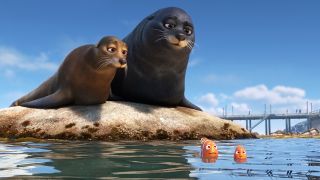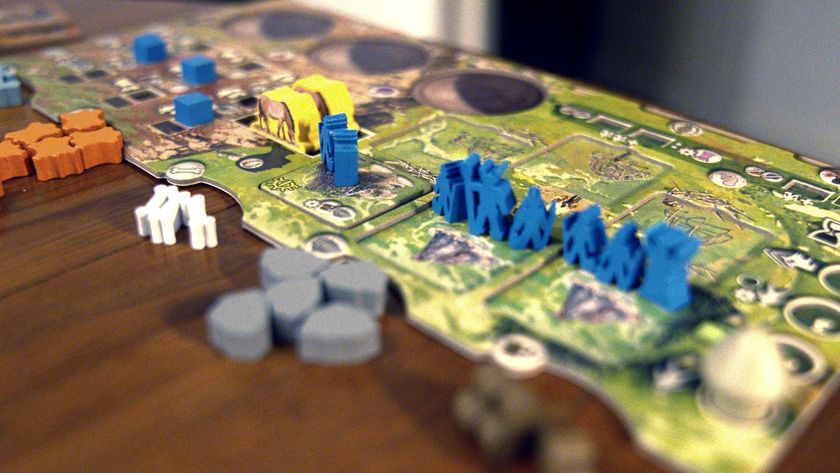12DOVE Verdict
For all its attempts to expand the original’s ensemble and embellish its themes, Dory is cod in batter beside Nemo’s smoked salmon. But still tasty.
Why you can trust 12DOVE
Pixar’s sequels to date have ranged from the sublime (Toy Storys 2 and 3) and the serviceable (Monsters University) to the unnecessary (Cars 2). The good news for Finding Dory, the animation powerhouse’s belated but welcome return to the underwater universe of 2003’s Finding Nemo, is that it firmly sits at the upper end of that quality spectrum.
The not-so-good news is that it’s still a few leagues beneath its Oscar-winning predecessor. Dory, you may recall, was the scatty blue tang fish whose defining characteristic – short-term memory loss – didn’t stop her helping clown fish Marlin (Albert Brooks) reunite with his lost son Nemo 13 years ago.
Andrew Stanton’s follow-up, co-directed by Angus MacLane, starts ingeniously by revealing how the infant Dory came to terms with her disability with the help of Jenny and Charlie (Diane Keaton and Eugene Levy), adoring parents she inevitably forgot about the moment they separated.
Cut to the present: Dory (Ellen DeGeneres) decides that things would be a whole lot better if she tracked down mum and dad, the existence of whom she has been briefly reminded by a convenient thump to the head. So across the sea she journeys, with Marlin and Nemo in tow, convinced a tearful family reunion awaits her at the Marine Life Institute in California where she spent her formative days.

What actually awaits her is a cantankerous octopus (Ed O’Neill), a short-sighted whale shark and a disembodied Sigourney Weaver (continuing the Pixar/Stanton association that began in Wall-E) as the voice of the aquarium’s public address system. Cue some often literal fish-out-of-water exploits as Dory follows a trail of clues that whisks her through the facility’s various exhibition zones, from the idyllic environs of ‘Open Ocean’ to the terrifyingly child-friendly ‘Touch Pool’: a deceptively placid lagoon where malleable crustaceans cower in fear of kid hands plunging in their direction.
Restricting the action to a solitary location enables a number of new characters to make their mark, among them a pair of rock-coveting basking seals (Wire duo Dominic West and Idris Elba) and a bashful Beluga (Ty Burrell) whose echolocation abilities help Dory on her quest. Considering the first film had an entire ocean at its disposal, however, you can’t help feeling shortchanged by this one’s comparative non-expansiveness, even if it does provide O’Neill’s tentacled chameleon a host of opportunities to blend in with his backgrounds.
It’s fair to say that Hank is Dory’s seven-limbed secret weapon. His ability to slink, scamper and dangle, and assume virtually any form, brings out the very best in Pixar’s tireless army of animators. (He stretches his skill further in the movie’s climactic set-piece.) Again, though, your appreciation is tempered by the fact that Pixar is arriving late at this particular party, rival DreamWorks having already explored the possibilities of octopoid contortions in Penguins of Madagascar.

Having our heroes encounter a giant squid en route to the MLI also means we get two cephalopods in succession, introducing a repetitive element that’s hardly helped by the number of scenes set inside pipes. You’ll lose count too of the times that Kaitlin Olson’s myopic Destiny collides with walls, a running gag that quickly becomes as familiar as the “Off! Off!” refrain to which West and Elba resort whenever another seal encroaches on their territory.
Thankfully Finding Dory has enough moments of captivating beauty to ameliorate its flaws. One scene in which a nocturnal star-scape is reflected in its protagonist’s inky pupils conveys an abyss of yearning, while another involving a flurry of migrating manta rays will leave you gobsmacked.
A later scene where Dory’s selective amnesia returns is as heartrending as anything Pixar have given us since Up, while the use of ‘What A Wonderful World’ by Louis Armstrong at a pivotal moment in the narrative is hilarious and audacious. Elevating Dory from comic relief/sidekick to heroine, moreover, it sends out a positive message about not just surviving but thriving with an impairment – an overdue corrective, perhaps, in a genre with a rather patchy track record when it comes to depicting mental and physical disorders.
After the underperforming The Good Dinosaur, Finding Dory could hardly be anything else but a partial return to form. For all its delights though, it remains something of a placeholder from an outfit that, as Inside Out proved, is capable of so much more.
More info
| Directors | Andrew Stanton, Angus MacLane |
| Starring | Ellen DeGeneres, Albert Brooks, Ed O’Neill, Diane Keaton, Idris Elba |
| Theatrical release | July 29, 2016 |
Neil Smith is a freelance film critic who has written for several publications, including Total Film. His bylines can be found at the BBC, Film 4 Independent, Uncut Magazine, SFX, Heat Magazine, Popcorn, and more.













Who killed [SPOILER] in Daredevil: Born Again episode 3?

The creator of upcoming life sim Inzoi says he was "recklessly brave to even think about creating a game of this scale"

A year after its PS5 launch, Rise of the Ronin debuts on PC to "Mixed" reviews and performance complaints: "Stuttering on a 4090 is just... no"





